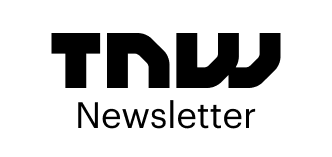Starting a business with little or no money can seem like a daunting task, but it’s entirely possible with the right approach and strategies. Many successful entrepreneurs have launched businesses with minimal upfront investment by leveraging creativity, resourcefulness, and strategic planning. Here’s a guide on how to start a business without money.
- Leverage Your Skills and Expertise
Begin by assessing your skills, knowledge, and experiences. Identify a business idea that aligns with your expertise. For instance, if you’re skilled in graphic design, consider offering freelance services or creating digital products. By using your existing skills, you can avoid the need for initial investment in hiring or outsourcing tasks.
- Offer Services Before Products
Services often require less initial capital compared to products. Starting a service-based business allows you to offer your skills directly to clients without needing to invest in inventory or production. Whether it’s consulting, tutoring, or freelance writing, services can generate income with minimal overhead costs.
- Start as a Side Hustle
If you’re currently employed, consider starting your business as a side hustle. This approach allows you to generate income while maintaining financial stability. Use your free time to develop your business idea, build a client base, and gradually scale up. This method reduces the financial risk and provides a cushion for your entrepreneurial venture.
- Utilize Free and Low-Cost Resources
Take advantage of free or low-cost resources to get your business off the ground. Platforms like social media, free website builders, and open-source software can help you establish an online presence without significant costs. Online courses, webinars, and community forums offer valuable information and support at little to no cost.
- Seek Out Partnerships and Collaborations
Collaborating with others can be a cost-effective way to start a business. Look for potential partners who have complementary skills or resources. For example, if you’re a web designer, partner with a marketer who can help promote your services. Shared resources and expertise can reduce costs and expand your reach.
- Bootstrap and Reinvest
Bootstrapping involves funding your business through personal savings, revenue from initial sales, or incremental investments. Start small, reinvest your profits, and gradually grow your business. This approach allows you to maintain control and ownership while minimizing financial risk.
- Explore Bartering and Trade
Bartering involves exchanging goods or services instead of paying with money. Offer your skills or services in exchange for what you need to start your business. For instance, if you’re a photographer, you could trade your services for website development or marketing support.
- Use Crowdfunding Platforms
Crowdfunding platforms like Kickstarter or Indiegogo can help you raise funds for your business idea. Create a compelling campaign that outlines your business concept, goals, and benefits. Engage potential backers by offering attractive rewards or incentives. Crowdfunding not only provides financial support but also validates your business idea.
- Apply for Grants and Competitions
Research grants and business competitions that offer funding or resources to startups. Many organizations and government agencies provide grants to support new businesses, especially those addressing specific needs or challenges. Winning a competition or receiving a grant can provide a financial boost without requiring repayment.
- Focus on Customer Validation
Before investing significant time or money, validate your business idea by testing it with potential customers. Conduct surveys, seek feedback, and use minimum viable products (MVPs) to gauge interest and demand. Validating your idea early can help you refine your approach and minimize financial risk.
Also Read: How To Remove Security Tags From Clothes
Email your news TIPS to Editor@kahawatungu.com or WhatsApp +254707482874



